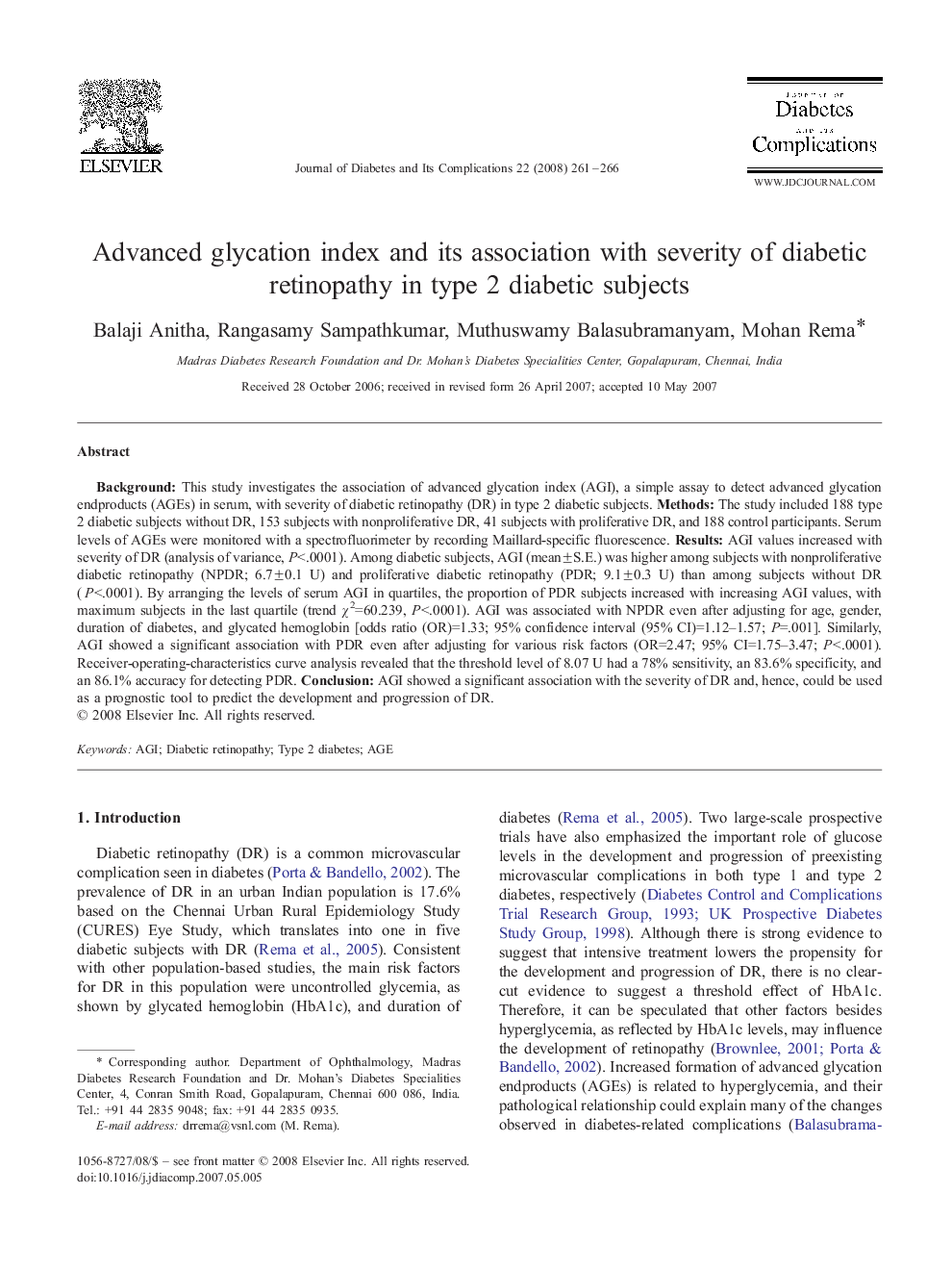| کد مقاله | کد نشریه | سال انتشار | مقاله انگلیسی | نسخه تمام متن |
|---|---|---|---|---|
| 2804652 | 1156888 | 2008 | 6 صفحه PDF | دانلود رایگان |

BackgroundThis study investigates the association of advanced glycation index (AGI), a simple assay to detect advanced glycation endproducts (AGEs) in serum, with severity of diabetic retinopathy (DR) in type 2 diabetic subjects.MethodsThe study included 188 type 2 diabetic subjects without DR, 153 subjects with nonproliferative DR, 41 subjects with proliferative DR, and 188 control participants. Serum levels of AGEs were monitored with a spectrofluorimeter by recording Maillard-specific fluorescence.ResultsAGI values increased with severity of DR (analysis of variance, P<.0001). Among diabetic subjects, AGI (mean±S.E.) was higher among subjects with nonproliferative diabetic retinopathy (NPDR; 6.7±0.1 U) and proliferative diabetic retinopathy (PDR; 9.1±0.3 U) than among subjects without DR (P<.0001). By arranging the levels of serum AGI in quartiles, the proportion of PDR subjects increased with increasing AGI values, with maximum subjects in the last quartile (trend χ2=60.239, P<.0001). AGI was associated with NPDR even after adjusting for age, gender, duration of diabetes, and glycated hemoglobin [odds ratio (OR)=1.33; 95% confidence interval (95% CI)=1.12–1.57; P=.001]. Similarly, AGI showed a significant association with PDR even after adjusting for various risk factors (OR=2.47; 95% CI=1.75–3.47; P<.0001). Receiver-operating-characteristics curve analysis revealed that the threshold level of 8.07 U had a 78% sensitivity, an 83.6% specificity, and an 86.1% accuracy for detecting PDR.ConclusionAGI showed a significant association with the severity of DR and, hence, could be used as a prognostic tool to predict the development and progression of DR.
Journal: Journal of Diabetes and its Complications - Volume 22, Issue 4, July–August 2008, Pages 261–266